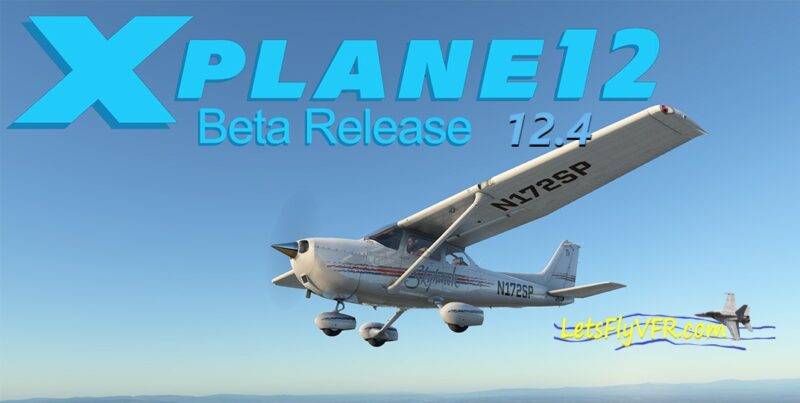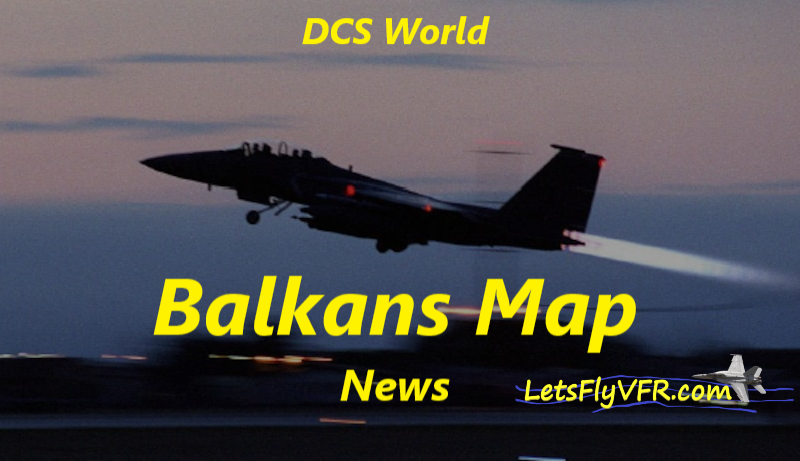Discover How to Fly a Cessna 172 for Beginners.
Introduction to Controls and Instruments (updated October 24)
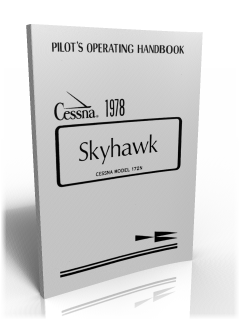
Are you looking to learn to fly? If you are then knowing how to fly a Cessna 172 is a great place to start your journey. Not having flown a Cessna 172 I thought I would do some research to compliment the real world flying I have done in other aircraft. Let’s look at the equipment and the locations of all the switches as well as controls you need to fly in Cessna 172.
The first place I would suggest starting learning how to fly a Cessna 172 is the warning placards in the aircraft. These tell you important information on what you can and cannot do when flying the aircraft. You can also get Pilot Operating Handbooks (POH) for the Cessna 172 online for flight simulator use. These have comprehensive details on the real-world aircraft procedures and more.
X Plane 11 as well as Microsoft Flight Simulator 2020 offer all include a Cessna 172 as the training aircraft of choice. If your keen to get started learning to fly, then these flight simulators will be a great tool.
I am basing this little lesson on X Plane 11/12 and its flight handling and systems. We can use it as a reference for the location of controls as well as switches and instruments as it is quite well laid out.
- Latest CPU’s Available Now – Amazon.com
- Get a NEW GPU Best Performance – AMAZON.com
- Upgrade RAM Here today – AMAZON.com
- Prebuilt PC Options – AMAZON.com
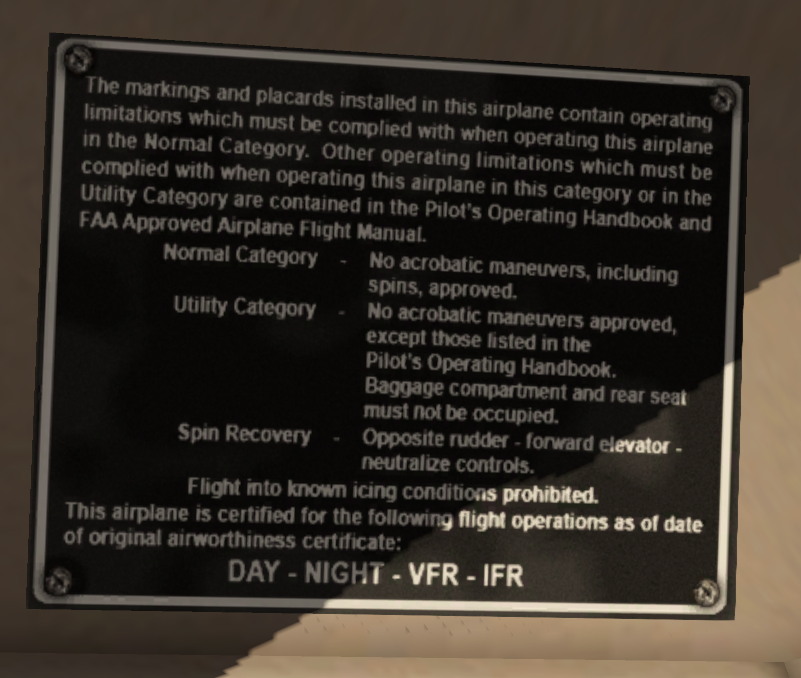
Cessna 172 Instruments & Systems
Flight Control – Yellow Zone
The Yellow Box shows Air Speed, Artificial Horizon and Altitude on the top row. The second row of instruments from the left are Turn and bank indicator, Compass and VSI or Vertical Speed indicator.
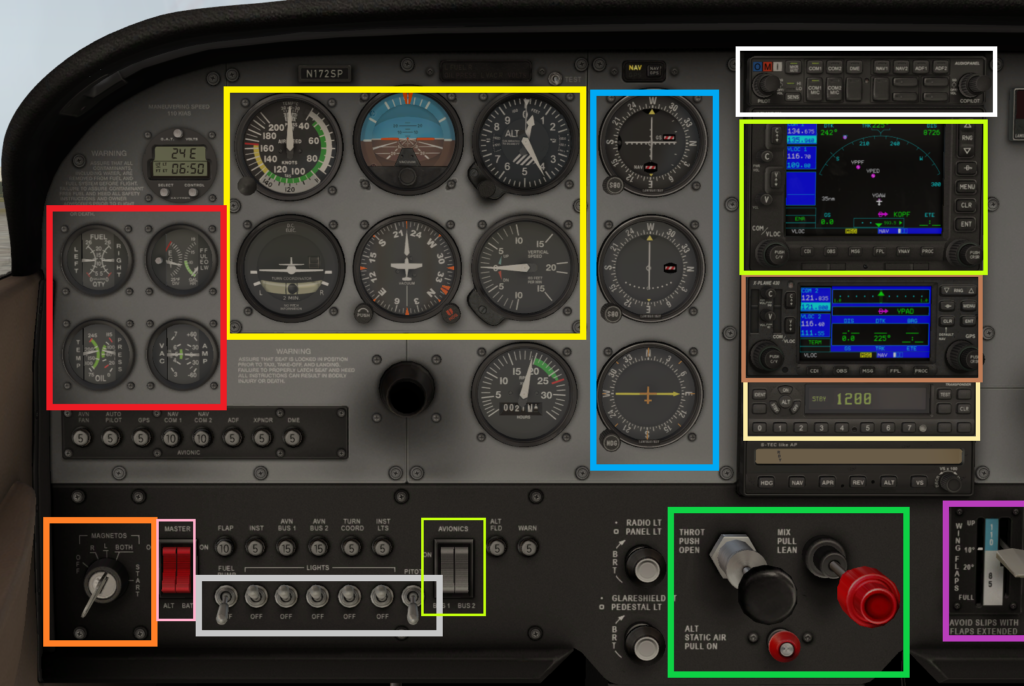
Cessna 172 Engine Instruments – Red Zone
The Instruments in the red box are all related to fuel quantity and engine exhausts temperature (EGT) and fuel flow in the top gauge.
The next row shows engine temps as well as battery and amps being produced.
Navigation Instruments – Blue Zone
The Navigation Instruments in the blue boxes require radio navigation aids called VOR radios. They will when set up correctly with a direction dialled in as well as a navigation frequency add into the nav radios which there are two you can even do ILS or Instrument approaches in the Cessna 172. The White Box is where you will find the radio controls and selection options.
Cessna 172 Engine Ignition – Orange Zone
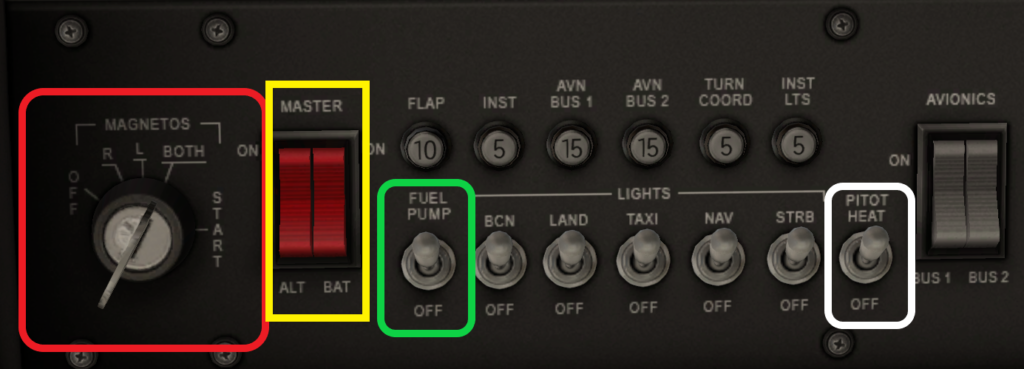
The orange controls are very similar to a car ignition. In addition to the on position there are a start as well as two magnetos which are like ignitions systems. It is common for aircraft to have a backup ignition system.
1st position is off – Left Mag – Right Mag – Both (Magnetos) – START. The SW goes from Off to Start then back to Both which means both magnetos are on. During pre take off checks we select individual magnetos to ensure the magneto is working. If it has failed the engine will stop.
Light and Fuel Controls – White Zone – Switches
The white box has the light switches for navigation lights & strobes. It also has the Fuel pump switch which is an electric backup fuel s/w for the Cessna 172 which is used during critical phases of flight like take-off and landing. It is simply a backup in case the primary mechanical pump fails.
Avionics Master – Yellow Box (Thin)
This is an Avionics master switch which simply turns the radios and navigation systems on.
GPS Navigation System – Light Green Box
The GPS is a fantastic device which enables you to navigate with way points and get from point A to B quickly. It will quickly find the closest airports to you in an emergency and much more.
Cessna 172 Engine and Fuel Controls – Purple Zone
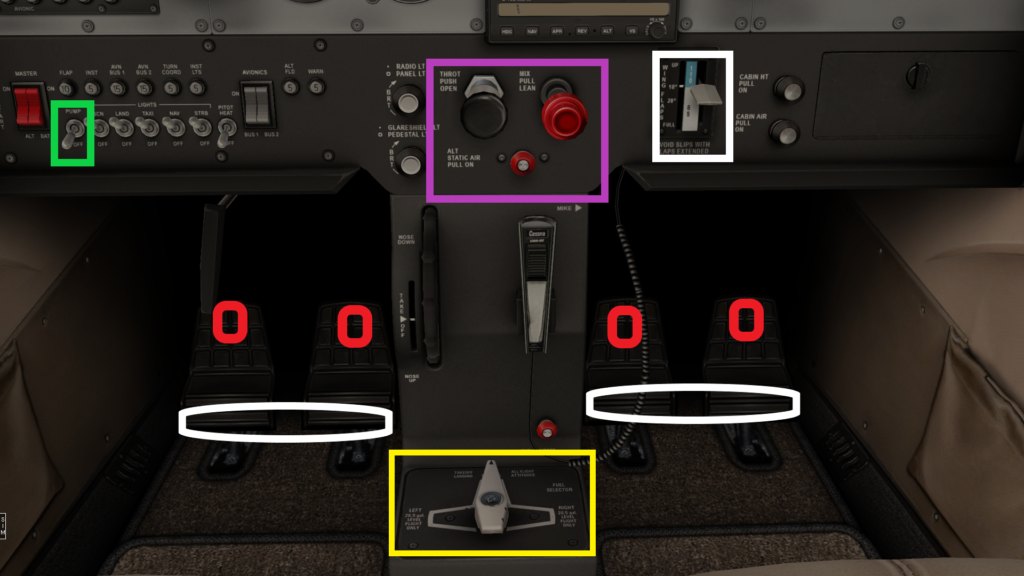
The centre purple box houses the throttle and mixture controls. The black knob is the throttle, and the red knob controls the air to fuel mixture in the engine. We can monitor the efficiency of the engine with the EGT and fuel flow. This we will look at more when we get to starting and adjusting the engine for cruise.
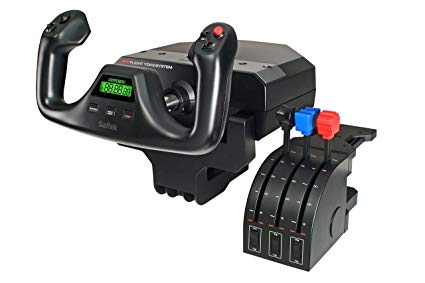
Cessna 172 Yoke
When you are learning how to fly you will become very use to the control yoke. If you’re not exactly sure what this does it moves the ailerons so you can roll and turn plus it operated the elevator at the back of the aircraft to allow you to climb and descend.
How does the yoke move? Well, if you rotate it Left you will roll in that direction as well as right then you will roll right. If you pull back on the yoke, then you will pitch up and alternatively push forward and you will pitch nose down. It’s a pretty simple concept, isn’t it?
Rudder & Brakes
The rudder pedals provide control of the rudders but also provide brakes. Pushing the rudder pedals in a Cessna 172 pushed the rudder from side to side as well as turning the front wheel for steering on the ground. If you push the top of the brakes forward the pedal operate individual brakes on the right or left.
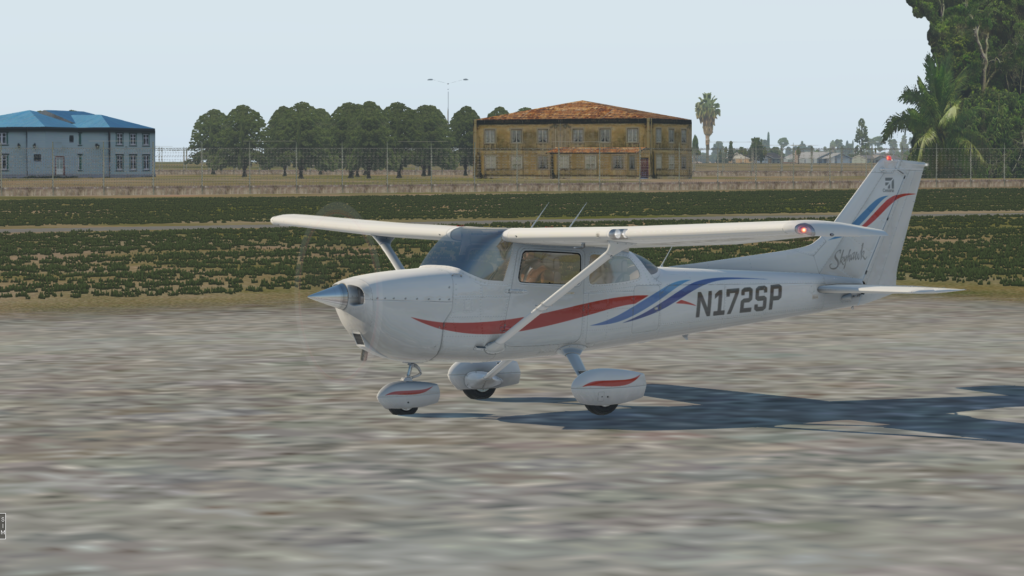
Fuel Selector
The fuel selector is down on the lower centre console. This allows you to select right or left wing for times where maybe you filled up one then decided not to fill the other wing, and the aircraft is unbalanced. You can select the full wing and use the fuel there till the wings balance out then use both setting. You can also set it to off/close when your finished flying for the day.
Flap Selector
The flap selector is in the white box and does as its name implies. The flap selector is full up when in the top position, 10 degrees at the first position then 20 degrees at the second stop then a full 30 degrees at the 3rd and final stop at the bottom.
The Cessna 172 generally does not use flaps on take-off unless there is a requirement to climb quickly or maybe you’re taking off at a high airport in some mountains.
How to Fly a Cessna 172 – Wrap up Introduction
I hope you have found this a good introduction to how to fly a Cessna 172 getting to grips just where and what all the controls do. We will move forward to engine start then taxi, take-off, circuit and landing in coming posts.
If you have any questions please leave me a question below. Just a reminder that this is intended for flight simulator pilots and not real world flying. If you considering flying in the real world I wish you well but speak to your qualified flying instructor regarding your flying requirements.
Regards …………….. Gunnie

- Joystick / HOTAS – AMAZON.com
- Rudder Pedals – AMAZON.com
- Throttle Quadrant – AMAZON.com
- Gaming Chair – AMAZON.com
- VR Headset – AMAZON.com
Author
Brendon McAliece (Aka Gunnie) is a military veteran with 23 years working on Jet Fighters, their weapons systems and ejection seat/module systems as well as munitions and R&D. Involved with flight simulation since the 1980s, he has flown all the major flight simulators over the years.
He is an Australian expat who has lived in Malaysia, UK, Saudi Arabia and more recently Thailand. He is a multi-lingual blogger who loves to share his life experiences here on LetsFlyVFR.com and DreamingGuitar.com, with his lifestyle and Travel experiences Blog plus his Dreaming Coffee website.
Learn More @ DreamingGuitar.com – DreamingCoffee.com – LetsFlyVFR.com
( HOME – BLOG – SHOP – ABOUT )
As an Amazon affiliate I may benefit from qualifying sales.




